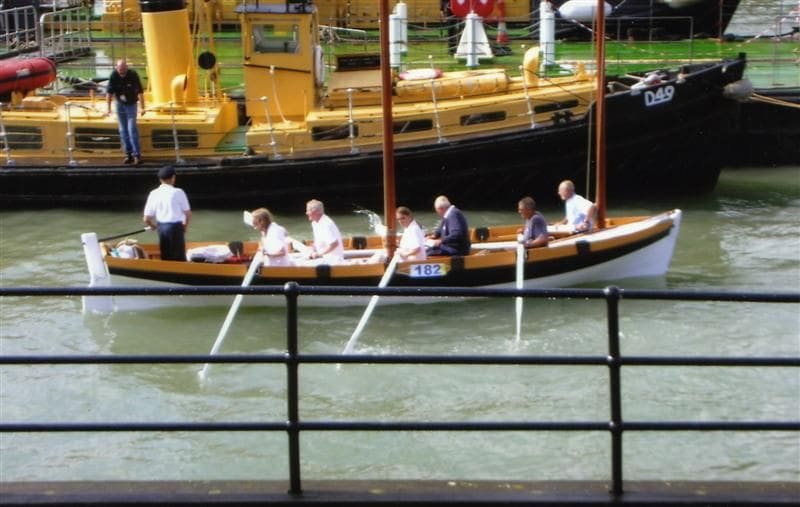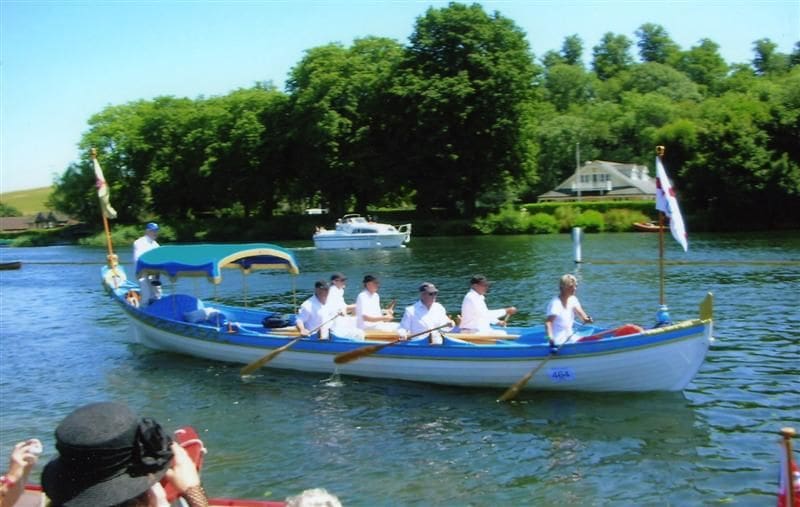ANTHONY ADDAMS tells us about two very different racing gigs from Cornwall and Pisa
%20[header].jpg)
Photo 1
Waterwitch, a Cornish Racing Gig
Enjoy more Model Boats Magazine reading in the monthly magazine.
Click here to subscribe & save.
I just drool over this boat, Photos 1 to 3. It has a perfection of line, colour, elegance, purpose and sheer beauty, so let us look at these pictures. Brian King exhibited a few years ago a fine scratch built model of a Scillonian gig and then produced a second equally fine model from a kit by Martin Howes.
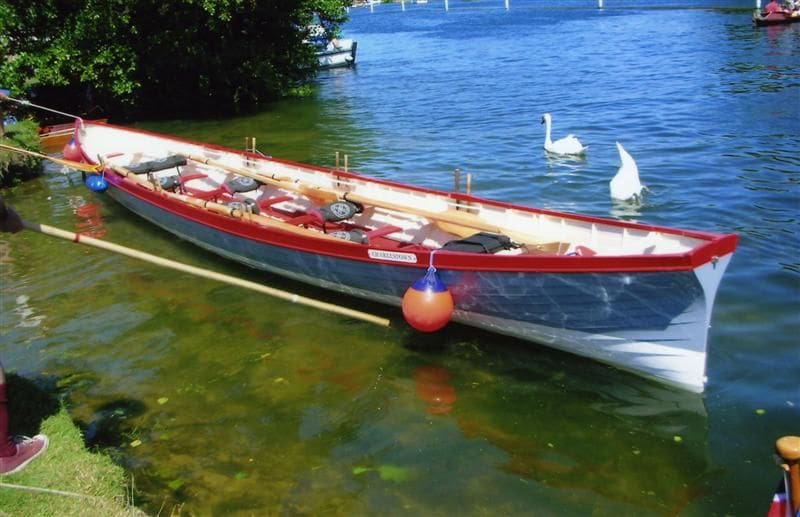
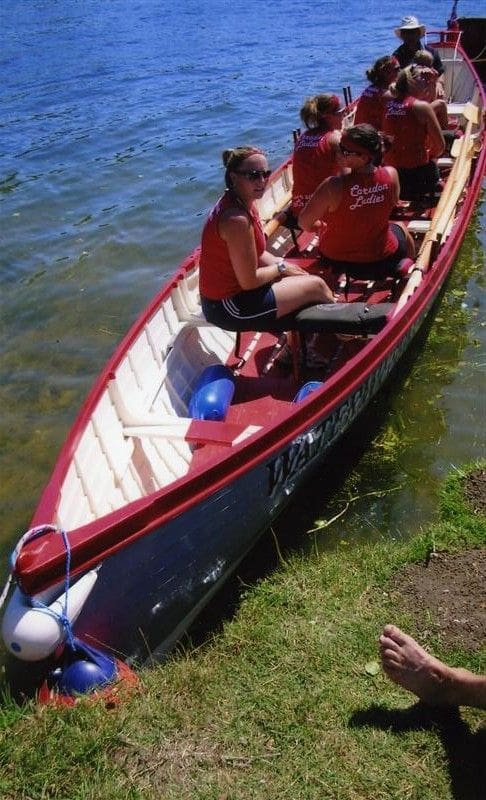
Waterwitch is photographed here at the 2006 Henley Traditional Boat Show. On this occasion it was brought from its home at Charlestown, near St Austell, Cornwall, to be rowed by an all female crew. Note that the rowers sit in a staggered line on separate thwarts and are not in pairs. This particular boat was built by John and Dave Currach of Looe and was launched in 2003. It is 32ft long with a 4ft 10in beam and is built of narrow leaf elm conforming to the traditional standard dimensions. The Charlestown Rowing Club looks after and races Waterwitch. In 2008 they achieved second place in the Champions League at the World Pilot Gig Championships where there were over 100 competing teams from all over the World, so as a club they are obviously pretty good at it.
Gigs like this are built for speed and only for oar power. The clinker built hull allows very thin planks to be used, just 1/4in thick, which keeps the weight to a minimum. Such a long narrow hull, built with minimum weight and combined with six oarsmen or oarswomen, creates a very fast boat.
Historically, around the coast of Cornwall and the Scilly Isles, gigs were used for transporting pilots from their harbours out to approaching ships and often in competition with other pilot carrying gigs. The crew that could get their pilot on board a ship first, would secure the business. Also, the speed of a well crewed gig carrying a revenue officer could catch boats engaged in smuggling, which was particularly useful around the Channel Islands and the Cornish mainland during the wars with France from around 1790 to 1815.
Speed under oars is therefore the most important advantage of the gig. Today there is the growing sport for racing gigs with about 30 clubs around Cornwall and more in the Scilly Isles. There is information and many interesting pictures on the internet about these craft and clubs.
Pisa and the Regatta of the Ancient Maritime Republics
In Pisa, Italy, gig racing is the biggest event of the year. The ancient rivalries for maritime supremacy between the Republican cities of Pisa, Amalfi, Genoa and Venice are re-ignited in a grand festival every year in July.
In Pisa, racing along the river Arno, the four boats representing the four ancient republics are identified by different colours and prominent figureheads. A red boat with the eagle, represents Pisa; a blue boat with the winged horse, Amalfi; a white boat with the winged dragon, Genoa; a green boat with the lion, Venice. The race takes place over a course on the river Arno, in an upstream direction, finishing close to the church of St Matthew. Each boat has a crew of eight rowers, but this is not just a boat race, because preceding the regatta, there is a grand parade of some 320 people in splendid medieval costumes, representing religious, military, and political characters as well as plenty of beautiful damsons. Fire eaters, jugglers, jesters, musicians and many other entertainers add to the marvellous spectacle.
I have not attended the event at Pisa, but I have been to another similar festival at Marostica and can confirm that the Italians certainly know how to put on an incredible pageant.
So, now let us look at the magnificent red gig representing Pisa in Photos 4 to 7. Originally in 1956, when the races were first started, the boats were built of wood. Today they are made in Venice of GRP, thus producing a lighter and faster boat. The decoration on them is truly spectacular. There is little more I can add except to let you enjoy the pictures and perhaps they might inspire some readers to build a model. I saw the boat pictured on display in the centre of Pisa during the week before the race in 2006.
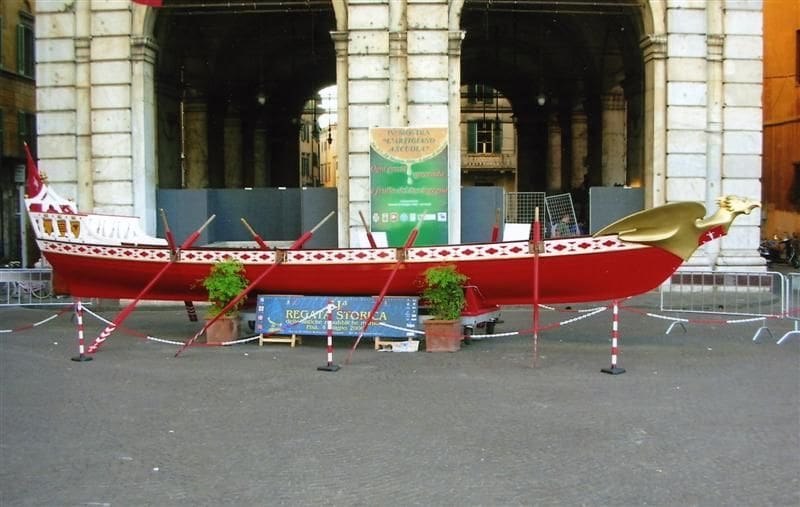
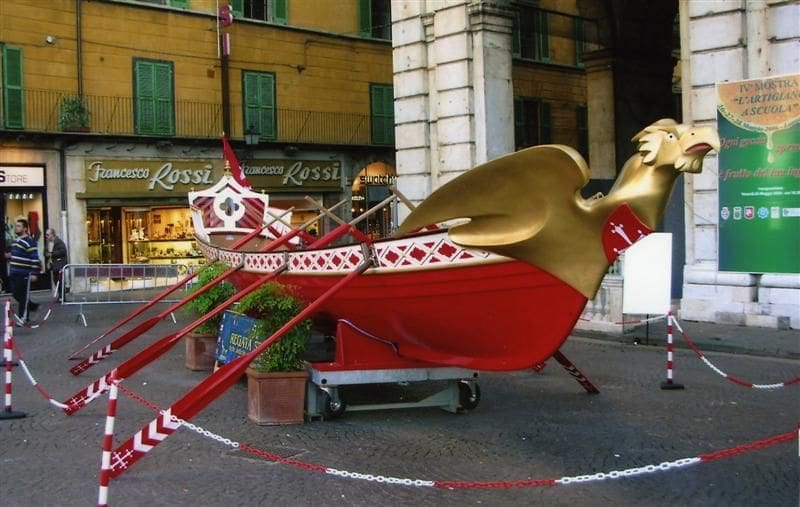
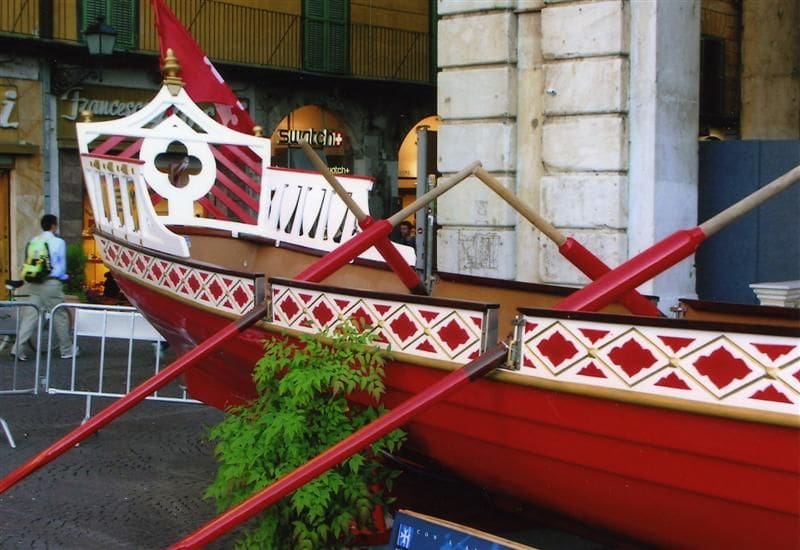
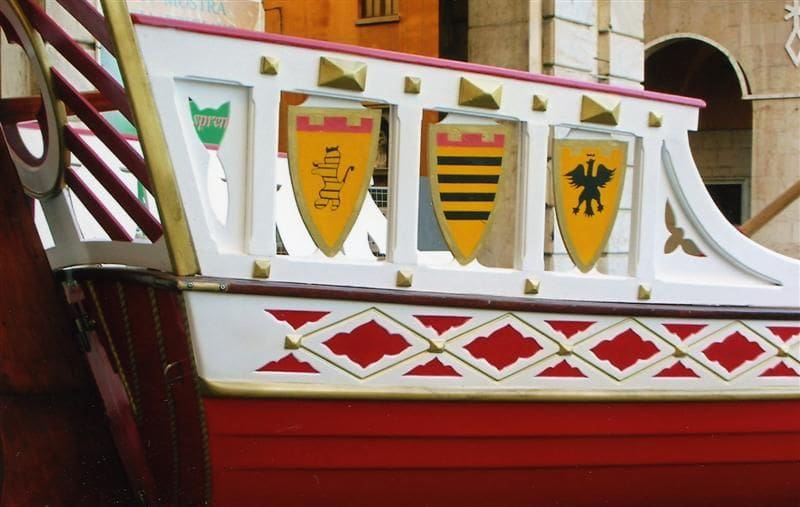
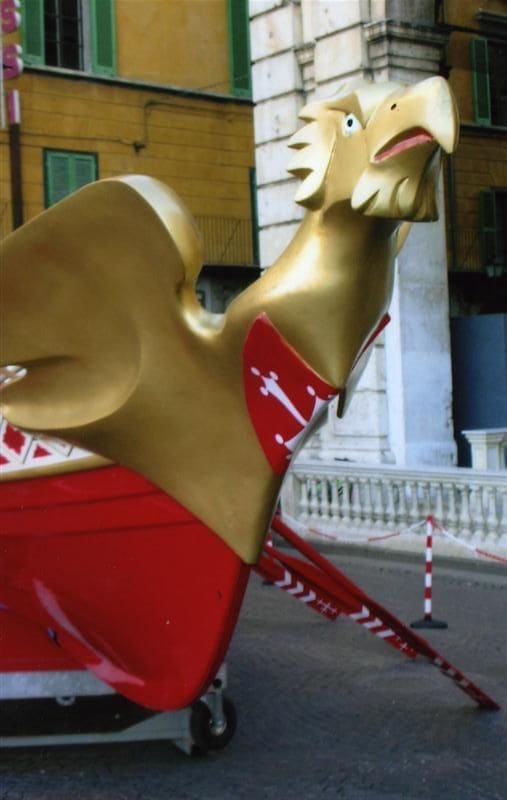
Some other gigs
Gigs were also carried by warships for transporting captains and officers between ships at sea and to the shore. Some had sails, luff rigged and with two masts on the larger gigs. Photo 8 shows such a naval gig at Portsmouth. They were more robust in construction and could be smaller or larger than Waterwitch. In the days of sail, rowed boats such as gigs could of course travel into the wind or indeed in any direction, thus offering an advantage over larger sailing ships for over short distances.
The gig design has lent itself to the oared boats used in royal and civic pageants throughout the centuries. Photo 9 shows a modestly decorated example at Henley, but canopies in velvet, gilded cherubs and sea horses would often adorn the boats of wealthy entrants in the 18th and 19th centuries. Also, some gigs used by admirals and other senior officers of all navies were often decorated at their own expense to distinguish them from the rest of mankind (!) and examples are preserved in museums, notably at Greenwich, Lisbon and Aranjuez near Madrid. Finally, Canaletto’s paintings of the Venice festivals also show numerous gigs magnificently decorated.
So I hope this little treatise will inspire some modellers to have a go at making a model of these interesting rowing boats. Typing Rowing Gigs into your internet search engine will produce many useful links.
